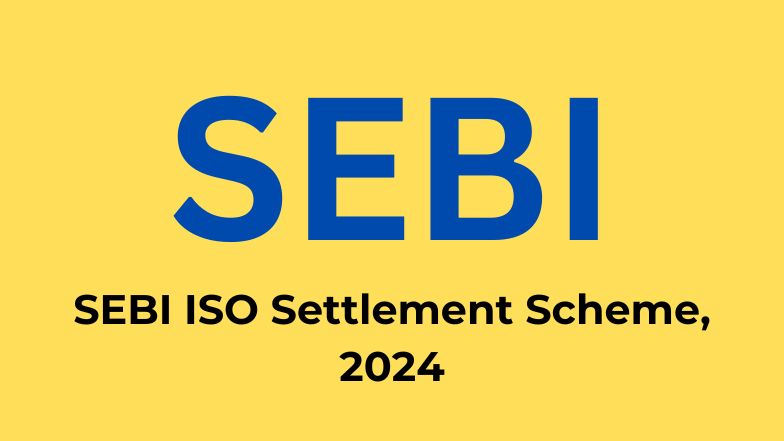
The Securities and Exchange Board of India (SEBI) has introduced a third Settlement Scheme aimed at addressing irregularities in trading within the illiquid stock options segment of the Bombay Stock Exchange (BSE). This article provides an in-depth examination of the scheme, outlining its objectives and implications for involved entities.
SEBI’s decision to implement the Settlement Scheme arises from the necessity to tackle trading activities conducted by certain entities in the illiquid stock options segment between April 01, 2014, and September 30, 2015. These entities have faced proceedings initiated by various authorities or forums, including Adjudicating Officers, the Securities Appellate Tribunal (SAT), Courts, and Recovery Officers.
The Settlement Scheme presents an opportunity for entities engaged in reversal trades during the specified period to settle pending proceedings. By participating in this scheme, entities can expedite the resolution of proceedings and avoid prolonged legal processes and associated expenses.
SEBI and BSE will make frequently asked questions (FAQs) regarding the Scheme available on their respective websites starting from March 11, 2024. These FAQs aim to provide clarity and guidance, addressing common queries and assisting entities in understanding the intricacies of the scheme.
The Scheme will remain operational from March 11, 2024, to May 10, 2024, inclusive of both dates, unless extended by the Competent Authority. Entities interested in availing the settlement opportunity must adhere to the specified timeframe.
Entities failing to utilize the Settlement Scheme within the stipulated period will face actions in accordance with relevant securities laws. This may involve continued proceedings and potential legal consequences for non-compliance.
SEBI’s ISO Settlement Scheme 2024 presents a significant opportunity for entities engaged in illiquid stock options trading to resolve pending proceedings and mitigate legal risks. By opting for settlement, entities can streamline the resolution process and avoid prolonged litigation. Eligible entities must assess the Scheme’s terms and act within the specified timeframe to benefit from its provisions. Stay updated through SEBI and BSE‘s official channels for further updates and clarifications.
When two businesses merge, their boards of directors authorise the union and ask the shareholders for their consent. For instance, in 1998, the Digital Equipment Corporation and Compaq entered into a merger agreement wherein Compaq acquired the Digital Equipment Corporation. Later, in 2002, Compaq and Hewlett-Packard combined. CPQ was Compaq’s pre-merger ticker symbol. The present ticker symbol (HPQ) was created by combining this with the Hewlett-Packard ticker sign (HWP).
In a straightforward acquisition, the acquiring business buys the bulk of the acquired company, which keeps its original name and organisational structure. The 2004 acquisition of John Hancock Financial Services by Manulife Financial Corporation, in which both businesses kept their names and organisational structures, is an illustration of this kind of deal. Six By using a whitewash resolution, the target company may demand that the purchasers guarantee that the target business will continue to operate profitably for a certain amount of time following acquisition.
By merging key operations and doing away with outdated corporate frameworks, consolidation results in the creation of a new corporation. Following their acceptance, shareholders of both firms will get common equity shares in the combined company. The consolidation requires their permission. For instance, the 1998 announcement of a merger between Citicorp and Travellers Insurance Group led to the creation of Citigroup.
In a tender offer, one business proposes to pay a certain amount instead of the going rate for the other business’s outstanding stock. By passing the management and board of directors, the purchasing business makes the offer directly known to the other company’s shareholders. For instance, Johnson & Johnson submitted a $438 million tender offer to purchase Omrix Biopharmaceuticals in 2008. By the end of December 2008, the agreement had been finalised when the company accepted the tender offer.
An asset acquisition occurs when a business directly buys the assets of another business. The shareholders of the company whose assets are being acquired must provide their permission. During bankruptcy procedures, it is common for other companies to bid for different assets of the insolvent company. The bankrupt company is then liquidated upon the ultimate transfer of assets to the purchasing firms.
In a management acquisition, which is often referred to as a management-led buyout (MBO), the executives of one firm acquire a majority stake in another, therefore bringing it private. In an attempt to assist with financing a transaction, these former CEOs frequently collaborate with financiers or former corporate officers. These M&A deals usually require the approval of the majority of shareholders and are financed mostly through debt. For instance, Dell Corporation declared in 2013 that its founder, Michael Dell, had purchased the company.

